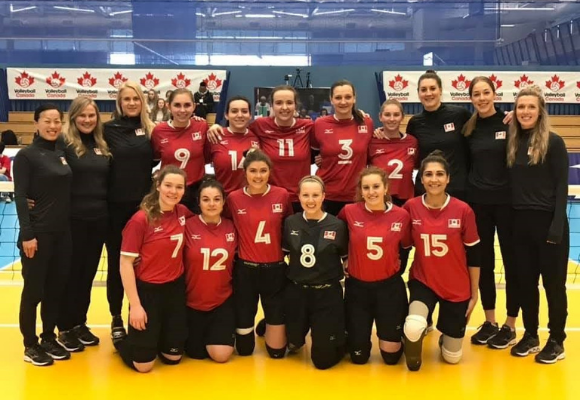It takes a village (Part 3): How Sather Clinic staff support Canadian athletes preparing for the Paralympics
Danica Erickson - 20 August 2021

This August, Yung Yung Wong, associate clinical educator in the Faculty of Rehabilitation Medicine and sport physiotherapist at the Glen Sather Sports Medicine Clinic (GSSMC), will attend her sixth major international sporting competition. A four-time Olympic staff veteran and a one-time Para Pan Am Games physiotherapist, Wong will be making her Paralympic debut as the physiotherapist for Canada’s Women’s Sitting Volleyball team at the Tokyo 2020 Paralympic Games. Wong became a physiotherapist because of her love for sports, but these days she doesn’t only use her skills and knowledge to help high-level athletes—she also supports people facing life-changing circumstances.
There was a time in her life when Wong had considered a career in sports management, and that interest led her to volunteer with the Canadian Olympic Committee missions staff at Canada House during several Olympic Games. She watched parasport competition for the first time at the Beijing 2008 Paralympic Games and learned more about sitting volleyball after meeting a member GSSMC team. She attended a training camp here in Edmonton and the team accepted her offer to work with them. After some time with both the men’s and women’s teams, she made the commitment to work with Canada’s Women’s Sitting Volleyball team.
To qualify for sitting volleyball, athletes must undergo classification and demonstrate eligibility in at least one of the seven eligible impairments, and most of the athletes Wong works with are eligible due to a limb deficiency or limb loss from amputation. Working with para athletes has given Wong a chance to learn new terminology and the specifics of how to play the game. “It allowed me to change my mindset about disability. In fact, it is really a different ability. For most of our players, it’s normal to not have a limb. It’s a different way of thinking in terms of how we approach people in the parasport side of things.”
While the work challenges Wong’s way of thinking, it’s still very much about the basics. “Physiotherapists are always looking to find new ways to perform movement, and we are movement specialists. Is there a right or wrong way to move? It’s been challenging but it’s been great. I think I have a different perspective on how people achieve movement in general. It definitely has enhanced my ability to work with other patients at the Sather Clinic.”
Wong’s work with the sitting volleyball athletes also benefits patients she sees at the Stollery Children’s Hospital in pediatric neuro-oncology and oncology. There, she has learned about rotationplasty, a surgical intervention some of the athletes she works with have also undergone. Rotationplasty involves removing the upper or middle part of the leg to eliminate bone cancer tumours, then reattaching the lower leg in reverse to use the ankle joint as a knee. People who have had rotationplasty don’t have regular hip, quad or hamstring muscles, so treating people who have had this procedure means dealing with different anatomy, including different movement mechanics.
Wong enjoys sharing with cancer patients the success stories of para athletes who have undergone life-changing surgeries like rotationplasty. “It’s difficult to come out of the phase when you find out you’re going to lose your limb. It’s wonderful to be able to say, ‘I’ve seen amazing, elite athletes who have had the same surgery and are on the other end of the process.’”
Wong’s colleagues at the Stollery have begun referring interested families to her for information about parasport. “It’s been amazing how I have been able to share some of these experiences and also make some of these connections between patients at the Stollery and our athletes.” Being part of a network of these very specialized services, she is also able to provide information about the pathway of rehabilitation, from hospital to Glenrose Rehabilitation Hospital, outpatient physiotherapy to participation in sports in the community as well.
Wong knows about the value of connection first-hand—she has support from her own GSSMC teammates to navigate her first Paralympic experience as a health-care professional. “The Sather clinicians are a wonderful team to be a part of. I have been very lucky to have access to great resources.” She learned a lot about how the games function when she accompanied the team to Lima, Peru for the Para Pan Am Games in 2019, but has consulted with her GSSMC teammates for medical knowledge. “Not many clinics have three clinicians representing Canada at major international competitions like the Sather Clinic has this year.”
Wong hopes more people begin to realize how exciting parasport can be, especially considering the significant barriers most Paralympians have overcome to get to this elite level. “It’s an amazing event to watch,” she says of sitting volleyball. “I hope more people watch parasport or get involved with parasport. It’s just incredibly rewarding as a physiotherapist to work in parasport.”
Photo courtesy Volleyball Canada.